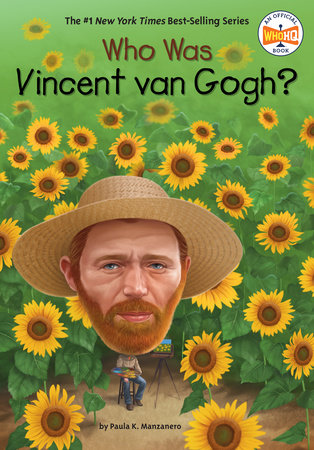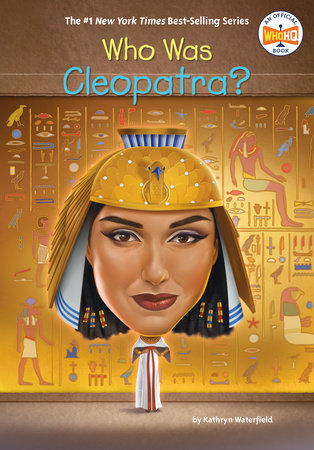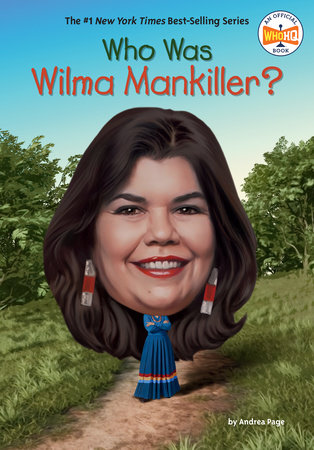Excerpt
Who Was Vincent van Gogh?
Who Was Vincent van Gogh?
In the United States, his name is pronounced “van-GO.” In England, it’s “van-GOFF.” The French say “van-GOG.” But in his native language of Dutch, Vincent van Gogh’s name is pronounced “van-GHOU-kh.”
His paintings, however, are all simply signed “Vincent.”
Vincent understood that his name would be difficult to pronounce in French and English. In a letter to his brother Theo, in 1888, he noted that “in future my name must be put in the catalog the way I sign it on the canvases . . . Vincent and not Van Gogh, for the excellent reason that people here wouldn’t be able to pronounce that name.” He was living in France at the time and had likely already heard people struggle with his last name.
Because he had worked for galleries and as an art dealer in his twenties, Vincent understood the importance of getting an artist’s name “just right.” But could he have ever imagined how many galleries and art catalogs his name would appear in over time?
Probably not.
Vincent van Gogh’s life was a very short one. He knew that he didn’t quite fit in among the other young men of his time. He tried working at many different jobs before he finally became an artist. And he was often anxious over the details of his daily life. But he loved nature, and he found a certain peace when he was near it or surrounded by it.
Today he is one of the most famous and influential figures in the history of art. And when we see a painting signed simply “Vincent,” there is no mistaking who created it.
Chapter 1Early Days
Vincent Willem van Gogh was born on March 30, 1853, in a small town called Groot-Zundert in the southern part of the Netherlands. Today the town is known simply as Zundert.
His father, Theodorus (called Dorus), was a minister. His mother was a very religious woman named Anna. He was the oldest of six children: Theo, Cor, Elisabeth (called Lies), Anna, and Willemina (called Wil). Vincent was named after his grandfather, who was a well-known art dealer. Three of his uncles were also art dealers. And so the business of selling art was a large part of the Van Gogh family history.
The Dutch Reformed Church that Theodorus ministered to provided the family with a house—called a parsonage. The church also provided them a carriage, a horse, and a few servants. Groot-Zundert was a swampy rural village near the Belgian border. It was a land of wheat fields and pine forests, and it was populated by potato farmers and sheep. The parsonage had a large garden where the Van Gogh children each had their own plot of land to plant.
The family was very close. After church on Sundays they would gather around the piano and sing. Every day, they walked together for an hour. And every night, they read aloud to one another. Their favorite books were by Charles Dickens and Hans Christian Andersen. Young Vincent thought Andersen’s fairy tales were “glorious . . . so beautiful and real.”
Vincent’s mother encouraged him to draw when he was very young. In fact, all the Van Gogh children learned to draw from Anna, who gave them her own drawings to trace and color. Vincent was very close to his mother.
Hans Christian Andersen (1805–-1875)
Hans Christian Andersen was born in Odense, Denmark. He wrote plays, novels, and poems. But he is most famous for his beloved fairy tales, which he began publishing in 1835. These include “The Ugly Duckling,” “The Emperor’s New Clothes,” “The Red Shoes,” and “The Princess and the Pea.”
One of his best-known fairy tales is “The Little Mermaid,” the story of a mermaid who falls in love with a human prince. She gives up her life in the sea for the possibility to live on land and remain with her prince. Although written in 1837, the story has been animated for film many times in many languages throughout the twentieth century. And a live-action film version was released in 2023.He was also very close to his brother Theo. The boys shared an attic bedroom, where they would often stay up late, talking and reading novels like The Swiss Family Robinson. Theo, who had been born just after Vincent turned four, adored his big brother. In the summer, the boys hiked in the fields around Groot-Zundert. In the winter, they went sledding and ice-skating. Vincent taught Theo how to build sandcastles and play board games. Although they shared many of the same interests, the boys were quite different. Blond-haired Theo was friendly and outgoing, while Vincent—-whose hair was bright red—-was more distant and shy. Vincent took long walks alone and collected wildflowers, birds’ nests, and beetles.
The young Van Gogh children were taught at home by their mother and a governess. A governess is a woman who works as a private teacher for the children of one household.
In 1860, when Vincent was seven, he attended the village school. Even though he could read very well, he did not do well in his classes. In 1864, when he was eleven, Vincent was sent away to a boarding school in Zevenbergen, which was about sixteen miles from his home. He was the youngest student there, and he felt very out of place. Two years later, young Vincent asked to return home. However, his parents decided to send him even farther away, to a new middle school in Tilburg, instead. It was a fancy public school in a former royal palace. There he studied Dutch, German, English, French, history, zoology, gymnastics, and art. In art class, he learned to “sketch the impression the object makes rather than the object itself.” But even art lessons couldn’t make up for his loneliness. While all the other boys at school lived at home with their loved ones, Vincent had to board with a local family.













